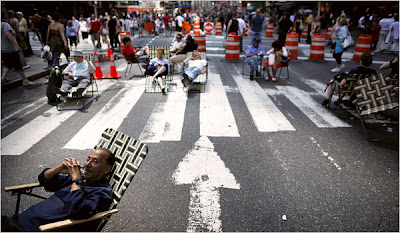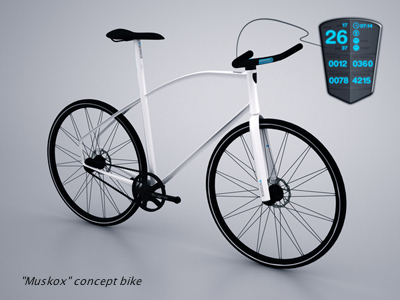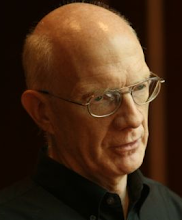Frazz by Jef Mallet

Frazz, aka Edwin Frazier, is a man for our times. Obviously educated, he is nonetheless underemployed (intentionally, for his backstory is, he's a songwriter who has made it big but can't give up the interactions of his "day job" as a middle-school janitor.) His interests? Education, philosophy, music, the impertinence of youth, and (to no small degree) physical activity, which includes a good deal of bicycling. To his credit, when Frazz is on a bike, he always wears a helmet. If you're lucky enough to have a daily newspaper that carries Frazz, don't pass him by.

I really like Mallet's graphic style. While it is very disciplined, it looks loose and sketchy, almost at times like Bill Watterson. His characterizations (both visual and dialogue-based) are great. I especially like Ms. Olson, who (no doubt unfairly) reminds me of countless teachers of my youth.
Yehuda Moon and the Kickstand Cyclery by Rick Smith

Yehuda Moon, like Frazz, is full of attitude (what practical cyclist isn't?) Yehuda is in the trenches, however. He works in a bike shop (the Kickstand Cyclery) and is a year-round commuter. He lives to ride, and will use any excuse to get on his bike to "run an errand". He seems to lack Frazz's lofty philosophical point of view, though, and the day-to-day of the world gets to him quite a bit more than Frazz. Sometimes the 'tude manifests itself as antipathy to heedless drivers (as in the example above) and sometimes it's just pure stubbornness, as in Yehuda's refusal to wear a bike helmet.
Yehuda Moon is an online-only strip and is subscription supported. Judging from the amount of comments on a strip on any given day, he has a strong readership (and I hope that is reflected in the subscription ranks.) There are a lot of cyclist "insider" jokes in this strip, and casual recreational cyclists might not get all of them. But you know, I've known guys (especially in Austin, Texas, where I used to live) who worked in bike shops who were just like Yehuda Moon.
Yehuda Moon is an online-only strip and is subscription supported. Judging from the amount of comments on a strip on any given day, he has a strong readership (and I hope that is reflected in the subscription ranks.) There are a lot of cyclist "insider" jokes in this strip, and casual recreational cyclists might not get all of them. But you know, I've known guys (especially in Austin, Texas, where I used to live) who worked in bike shops who were just like Yehuda Moon.
Sprocketman by Louis Saekow

Sprocketman is a superhero with a single purpose, to see that people are safe on their bikes. He originally appeared in the mid-t0-late 1970's in a comic book that was published and distributed as a joint project of the (California) Department of Public Safety and a nonprofit organization called the Urban Bikeway Design Collaborative. The comic book was drawn by a pre-med student at Stanford named Louis Saekow. It turned out to be a bit of a game-changer for Saekow, as he had so much fun drawing the comic book (his first) that he changed his major from medicine to graphic design!
In late 2002, Stanford University Transportation Services commissioned Saekow to do some more Sprocketman promotions. I'm not sure if they ever intended to do a complete comic book, but if it happened, I haven't been able to locate it. I think I may still have some original Sprockeman comics out in the garage — I used it in a bike commuting class that I taught 'way back in 1979. If you want to see the original Sprocketman comic book, you can download a PDF of it here.
Sprocketman also puts in an appearance in a very quirky website called "Pisser," which stands for "Public Information & Safety Superhero Education Rangers".











